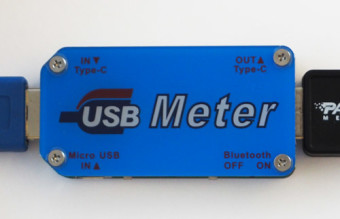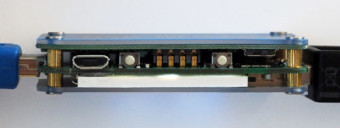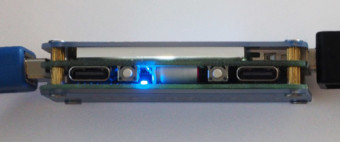Review: The UM25C USB tester with colour LCD and Bluetooth
Features
In addition to its built-in display, the tester also has a decent technical specification:• Voltage: 4.0 to 24.0 V (± 0.5% + 2 digits). Resolution 1 mV (5 digits)
• Current: 0.0 to 5.0 A, (± 1% + 4 digits). Resolution 0.1 mA (5 digits)
• Load resistance: 0.8 to 9999.9 Ω. Resolution 0.1 Ω (5 digits)
• Power: 0.0 to 99.999 W. Resolution 1 mW (5 digits)
• Temperature: -10 ° C to + 100 ° C (± 3 ° C)
• Timer: 0:00:00 to 99:59:59 (hh: mm: ss)
• Capacity: 0 to 99999 mAh
• Energy: 0 to 99999 mWh
Also noteworthy is its compatibility with the following charging standards:
• QC 2.0• QC 3.0
• Apple with 0.5 / 1 / 2.1 / 2.4 A charging current
• Samsung (virtually all mobile devices)
• Android DCP


The tester is also fitted with various USB ports: USB-A (in + out), USB-C (in + out) and Micro-USB (in). There are also four pushbuttons to select various operating modes and a tiny slider switch to enable Bluetooth connectivity. The model with a "C" suffix has this Bluetooth capability but the cheaper UM25 version does not. The Bluetooth allows you to pair it with a smartphone (Android app is available) or a PC so that you can view the display data in more detail on a mobile device or PC screen. For the latter option, there is extensive software available based on LabView.
This provides a really useful range of features for making USB energy measurements.
Construction


N.B. Anyone interested in making USB measurements is sure to have a drawer full of spare USB cables.
Read full article
Hide full article



Discussion (0 comments)